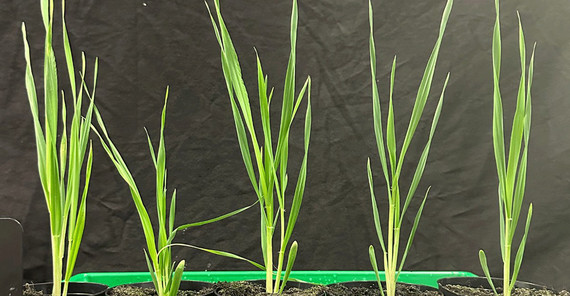Barley (Hordeum vulgare) is one of the world's most important cereal crops and has a wide range of uses, from animal feed and brewing to human nutrition and the production of biofuels. Despite its high resistance to environmental stress, rising global temperatures pose a significant threat to barley yields. The study offers innovative approaches to further strengthen heat tolerance and ensure productivity, which is essential for agriculture in view of climate change.
If plants are initially exposed to a low level of stress, they can be prepared for imminent, more severe stress, such as heat. This process, known as priming, creates a “memory” of the stress state experienced, enabling plants to respond more efficiently to subsequent stress events. The researchers were able to show how this mechanism is regulated in barley by two proteins and how a higher concentration of these proteins leads to increased resistance of barley to recurring heat stress.
“Our research provides a promising basis for the development of more heat-resistant cereal varieties and could make a significant contribution to the stability of agriculture in temperate climates,” explains Isabel Bäurle, Professor for Epigenetics of Plants at the Institute of Biochemistry and Biology of the University of Potsdam.
The team was able to demonstrate that the absence of the two proteins studied reduces heat stress memory, by weakening the responses of heat-induced genes. In contrast, a higher protein concentration leads to increased heat tolerance, as the plants are constantly in a “state of alert”. It is noteworthy that the increased heat tolerance in greenhouse experiments was not associated with any loss of yield.
“Knowledge of the function of the two proteins opens up practical approaches to improving heat tolerance in cereal crops in temperate climates without significant losses in productivity,” summarizes first author Dr. Loris Pratx.
Previous work on heat stress memory in the model plant Arabidopsis thaliana, also carried out in Prof. Bäurle’s research group, laid the foundation for the now published study and demonstrates the relevance of work on simpler model systems.
Link to Publication: Pratx, L., Dakhiya, Y., Nissen, R. et al. Conserved heat shock factors HvHSFA2 and HvHSFA3 control barley heat stress memory through diverged mechanisms. Nat Commun (2025). https://doi.org/10.1038/s41467-025-66651-6
Image 1: Barley plants in the greenhouse. Photo: Dr. Loris Pratx
Contact:
Prof. Dr. Isabel Bäurle, Institut für Biochemie und Biologie
Tel.: +49 331/977-2647
E-Mail: isabel.baeurleuuni-potsdampde
Media Information 25-11-2025 / Nr. 102


